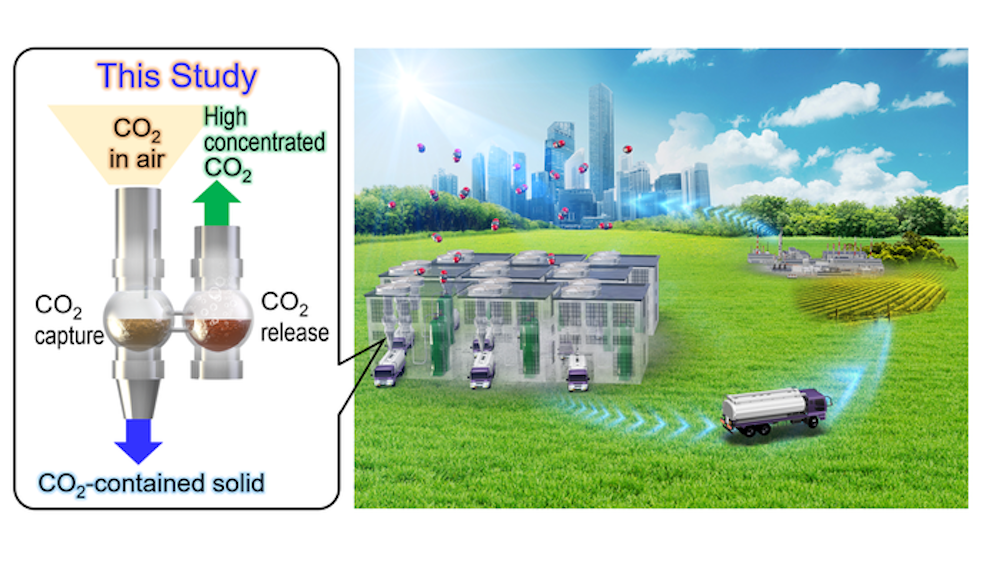Researchers Build World’s Fastest Carbon Capture System With 99 Percent Efficiency
This carbon capture method collects CO2 directly from the air to store it in deep geological formations or use in several activities like making synthetic fuel or food processing
Recently, researchers at the Tokyo Metropolitan University (TMU) have created a new direct air capture system to collect waste carbon dioxide. According to the team of researchers led by Professor Seiji Yamazoe, this new carbon capture system works two times faster with 99 percent efficiency.
Since the world is quickly transforming to cleaner energy sources, the prolonged transition takes decades to complete and an excessive amount of carbon emissions will already have caused drastic climate change. Therefore, the researchers from Japan are applying various strategies with the direct air capture (DAC) system as a solution.
Functioning of New Carbon Capture System
As mentioned above, this new system works by directly extracting carbon dioxide from the air. After that, the system either stores the collected carbon for geological formations or uses it for various human activities. For instance, it is great for food processing or creating synthetic fuels as per the International Energy Agency (IEA).
There are two ways to follow these approaches. One is the liquid DAC, where air passes through the liquid system, leading to a chemical reaction that occurs in a liquid solution to trap carbon dioxide
In the second method, the solid DAC makes use of solid sorbent filters to reach carbon dioxide to perfectly bind them. Both systems are reversible. So, it means that they can release captured CO2 using high temperatures if required. Hence, the systems are great for reuse as well.
Improvements in This System
One big drawback of general carbon capture systems is that they are not efficient enough. While the large-scale systems are being manufactured to work on it, the systems begin to lose efficiency when they capture carbon and get spoiled during gas recovery at high costs.

Image: New Atlas
However, Yamazoe’s team at TMU is working on improving the system efficiency with the new liquid-solid phase separation system for extracting carbon. This system functions like a liquid DAC in which the gas bubbles via a liquid solution. But it does not get trapped in the solution itself. The chemical reaction makes trapped carbon insoluble and separates from the mixture in a solid form.
According to the press release, TMU researchers used liquid amine compounds for completing their work. They are also experimenting with the structures to improve the efficiency and speed of the reaction.
With the use of isophorone diamine (IPDA) compounds, the researchers got a higher efficiency of up to 99 percent while working with 40ppm carbon concentrations. As a result, the extracted carbon precipitates as carbamic acid at a faster reaction rate that’s two times quicker than some of the leading DAC systems across the globe.
Hence, capturing and releasing carbon in this new system is very easy. The precipitate is heated up to 140 degrees Fahrenheit for recovering the carbon dioxide, and the recovered liquid can also get used in the carbon trapping procedure.
We think that this new system is likely to encourage similar fruitful experiments to reduce carbon emissions from the environment. While the researchers are still working and investigating ways to improve this new system, it has given many a hope for better future.
Via: New Atlas


